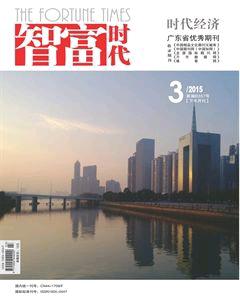BIOLINGUALISM: A CASE STUDY OF LANGUAGE USE IN THE LHASA OF TIBET
普珍
【ABSTRACT】Bilingualism is one of the most salient features of language use in Tibet and, at first sight, Lhasa appears to be just one example of this practice. And most of people in Lhasa are able to speak Chinese and Tibetan, however, it also arouses problem with finding the balance of using the two languages, many people are more focusing on learning Chinese and they are paying little attention on Tibetan which would cause a problem of losing the language with its unique culture. So in this thesis, I am going to do a case study of language use in Lhasa, Tibet, and questions about how people cope with bilingualism arise. Answers to such questions can be found in the fact that people are able to create a bilingual state in a given area because everyone is bilingual. That is conclusion emerged from interviews conducted with 100 inhabitants of Lhasa city in Tibet, an area primarily inhabited by the Tibetan people. The linguistic situation in Lhasa provides a valuable case study of what can happen in the absence of a fully developed Lhasa and can contribute to broader discussions of language use in Tibet.
【Key Words】 Bilingualism, Tibet, Lhasa, Tibetan, Chinese
Ⅰ.QUESTIONNAIRE
The following questionnaire was designed based on the aforementioned factors:
1.How many languages do you speak?
2.What is your native language?
3. What is your fathers language? What is your mothers language?
4. What language do you use when you speak to other ethnic groups in the region?
5.Where did you learn Tibetan/Chinese/ English and other ethnic groups in the region?
6.What language do you use when you speak to a person you dont know in Lhasa?
7. What is your age?
8. What is your sex?
9. What is your profession?
10. What is your educational background?
11. How long have you lived in Lhasa?
12. What is your name?
Ⅱ.SUMMARY OF INTERVIEW RESULTS
In this section, I summarize the data collected in the interviews.
1. Languages Spoken
According to the responses to question 1 and the responses to question 4, the interviewees spoke an average of 2 languages. These data reveal a pattern in which the number of actual languages tends to be greater than the number of reported languages.
2. Ethnic Identity
According to the responses to question 2, most interviewees, i.e., 60 of 100, were Tibetan, which was expected as the interviews occurred in one of the areas with the highest concentrations of the Tibetan people. Eight Hui people were among the interviewees. And the rest are Chinese.
3. Ethnic Identities of Father and Mother
The ethnic identities of the fathers and mothers of the interview subjects are essentially the same as those of the subjects themselves. However, the ethnic identities of the mothers are slightly more diverse than are those of the fathers.
4. What Language do People Speak to Whom and What language they use when they speak to other ethnic groups in the region.
This question, the most important one in the interview, asked about the languages used to communicate with various ethnic groups.
5.Learning Chinese and Tibetan.
According to the answers to question 5 “Where did you learn Tibetan?” only four participants learned it “at school,” whereas the others learned it outside of school, e.g., “in town,” “in business,” etc.
6. “What language do you use when you speak to a person you dont know in Lhasa?” the number (53people) answered Tibetan and the rest ( 35) answered Chinese. 12 people said that the language they use to communicate with a stranger depends on the person and cannot be decided in advance.
7. Demographic Characteristics
This subsection summarizes the features of the interviewees. First, the interviewees ranged from teenagers to people in their 60s, and the number of men and women was equal, i.e., 50 males and 50 females. (This was an unintended result.) In terms of occupation, interviewees held a variety of jobs, ranging from hotel guards to students and housewives
Ⅲ.DISCUSSION AND CONCLUSION
In this section, I discuss the language use by inhabitants of Lhasa, who are primarily Tibetan. Although Lhasa is an apparently Bilingual town, all residents are, in fact, Bilingual. This ostensible contradiction can be understood in the context of Peoples language attitudes.
What follows is a summary of the language attitudes expressed by the residents of Lhasa.
1) The elder people in Tibet mostly use Tibetan in daily life but more and more younger people are using Chinese.
2) When individuals do not know the language spoken in an area inhabited by another group or when visitors to ones own area do not speak the local language, a tertiary language that is known by all parties is used. In this case, the tertiary language is Chinese.
3) The local language used as a common language is the one known by the speaker that is closest to the language spoken by others.
4) English are used as only when local languages, Tibetan and Chinese do not work as such.
【REFERENCES】
[1]Grimes, Barbara,2000. Ethnologue: Languages of the World. Fourteenth edition. SIL International, Dallas, Texas.
[2]Lewis, M. Paul, ed. 2009. Ethnologue: Languages of the World. Sixteenth edition. SIL International,Dallas, Texas. Online version:http://www.ethnologue.com/ (Accessed April 15,2010).
[3]Genesee, Fred. 1987. Learning through Two Languages: Studies of Immersion and BilingualEducation. Rowley, MA: Newbury House.
[4]Hakuta, Kenji. 1986. The Mirror of Language: The Debate on Bilingualism. New York: Basic Books.
[5]Zentella, Ana Celia. 1997. Growing up Bilingual:Puerto Rican
[6]Wang Jiawei (2000). The Historical Status of China's Tibet.
[7]Feigon, Lee. (1998). Demystifying Tibet: unlocking the secrets of the land of the snows. Chicago: Ivan R. Dee.
[8]Bell, Charles (1924). Tibet: Past & Present. Oxford: Clarendon Press.

